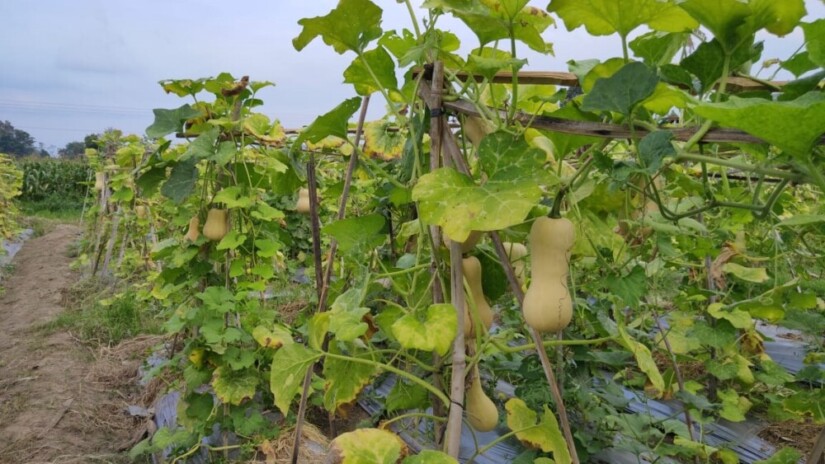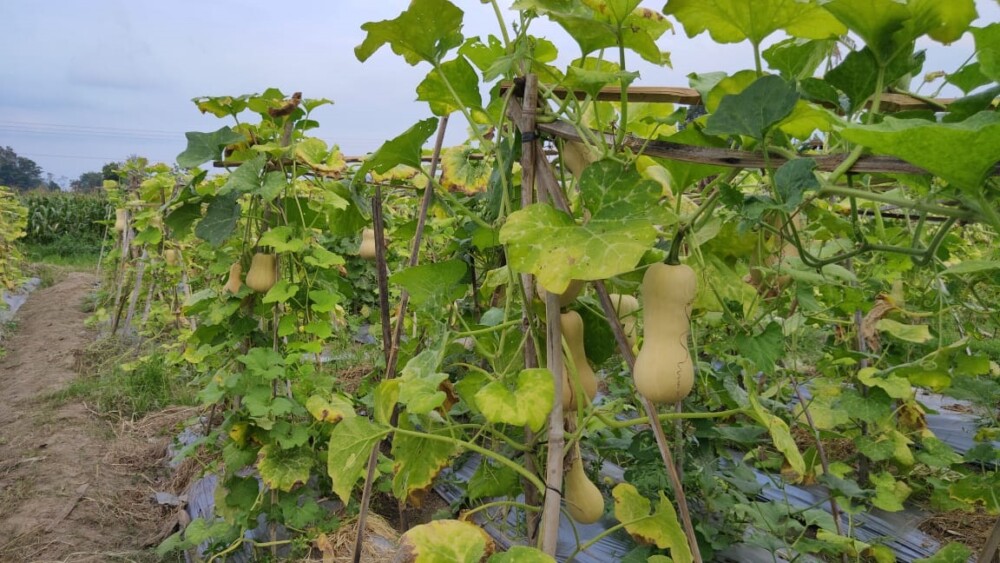Universitas Gadjah Mada (UGM) has cultivated the Citra Labu Gama (Citra LaGa) milk gourd variety, which has more advantages than other milk gourd varieties. If milk gourd is cultivated in marginal plains and karst critical plains, it will have a potential source.
“Citra LaGa milk pumpkin grows swiftly for about 75 to 85 days and contains high beta carotene, which is very nutritious for eye and body health,” said Prof. Budi S Daryono, S.Si., M.Agr.Sc, as the Citra Gama milk pumpkin researcher on Wednesday (6/1).
Gama Citra milk gourd is a new variety of milk gourd innovated by Budi Daryono and other UGM Biology researchers, namely Prof. Purnomo, M.S. They have developed this gourd since 2017. There were also farmers in Prambanan, Sleman, Yogyakarta, who helped cultivate the Gama Citra milk gourd.
Budi explained that Citra LaGa’s milk gourd comes from a crossbreed between a milk gourd from the Netherlands and a milk gourd from Japan, also known as Kabocha. Next, there was also a selection in producing the Citra Labu Gama cultivar line.
This variety of gourd has a quite more agile harvest period compared to a common gourd. The harvest period ranges from 75-85 days after planting. One gourd tree can produce 2 to 6 gourds with an average weight of 1-3 Kg/fruit. This yellow, brownish yellow, orange fruit can last up to 6-12 months.
Labu Citra LaGa is also considered a unique one because there are three shapes resulted from the gourd cultivation: the guitar, the barbell/paprika, and the swan/snake neck. Budi said that upper-middle-class consumers generally prefer pumpkin with a guitar shape. Secondly, the barbell/paprika form is more popular among the upper-middle class, and the lower-middle class commonly chooses snake shape as their general preference.
“We have cultivated three shapes so that consumers can choose their own preferences because so far, the salesmen have mostly determined the shape,” the Dean of the Faculty of Biology UGM explained.
Meanwhile, regarding the endurance of pests, Budi revealed that the Citra Laga milk gourd variety was more immune to Begomovirus attacks, which mostly attacked gourd plants compared to imported varieties. The researchers got these results after conducting four gourd varieties, namely varieties from China, varieties from Japan, varieties from the Netherlands, and Citra Laga.
“Gourd varieties from China are more prone to be infected with Begomovirus and followed by varieties from Japan, varieties from the Netherlands, and lastly the Citra LaGa variety. Therefore, Citra LaGa milk gourd grows as a variety that is more resistant to Begomovirus than the other three varieties,” he explained.
Budi said the Citra LaGa gourd cultivation is very potential to be developed because it has a high nutritional content. Accordingly, it has great potential to be used as an alternative food. Milk gourd is frequently used as a raw material for flour for baby porridge/complementary food for breastfeeding, cakes, bread, and porridge consumed during the recovery process, and health care for the elderly.
Citra LaGa milk gourd can be cultivated in low plains to moderate plains. Not only that, but this variety can also be cultivated on marginal plains such as moor and calcareous plains.
“For ex-mining land, we have not experimented yet whether it can be cultivated or not. However, in the future, we will try it on that land. Hopefully, we can plant there too,” he said.
Author: Ika
Translator: Natasa A





